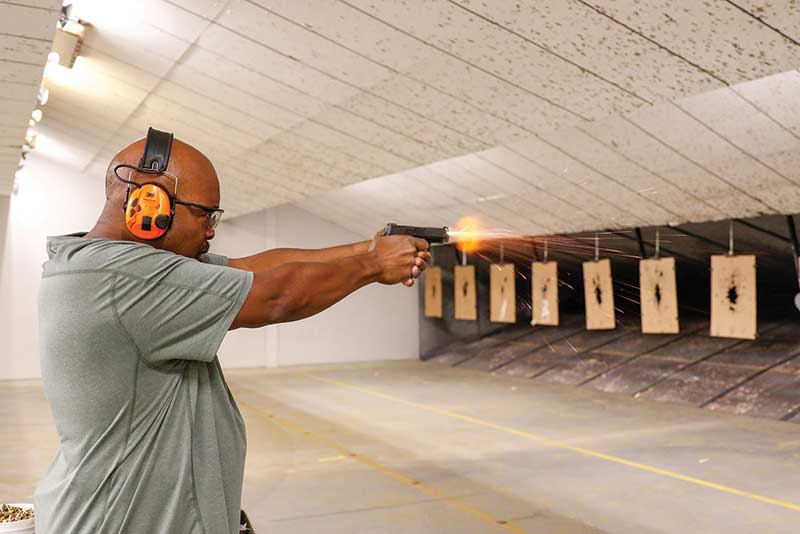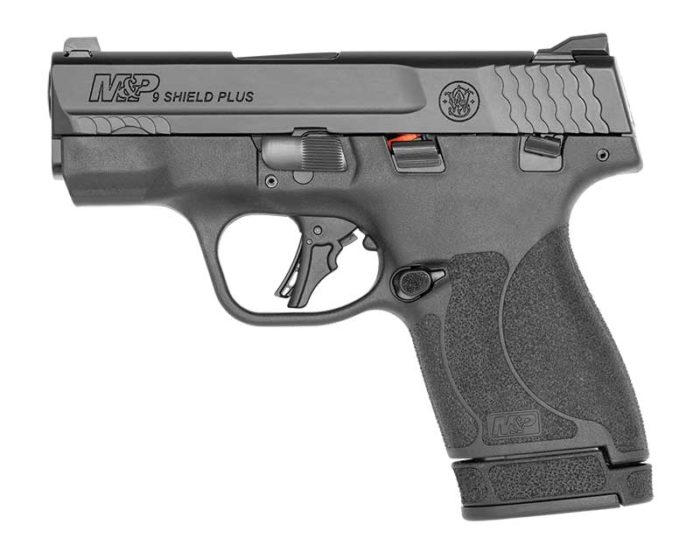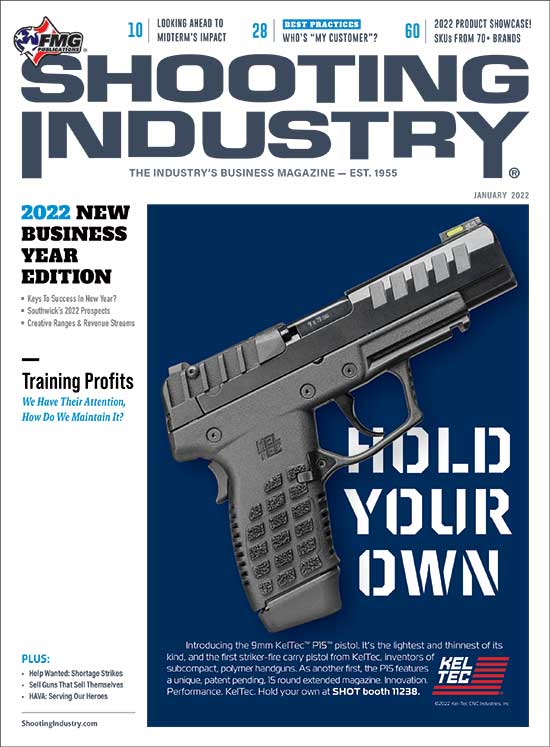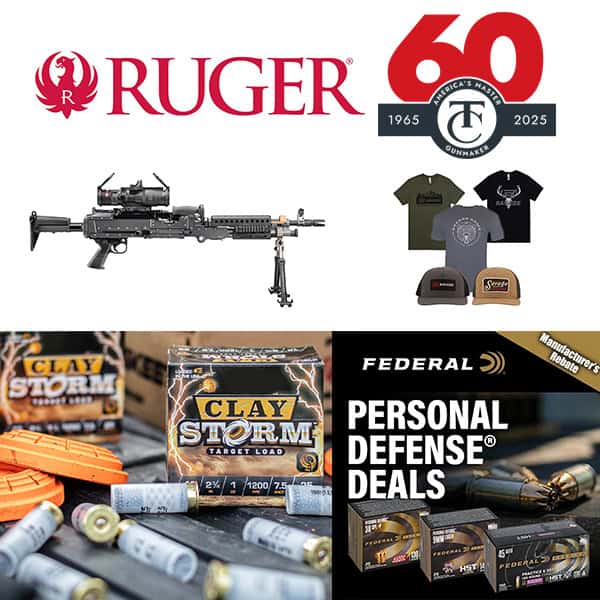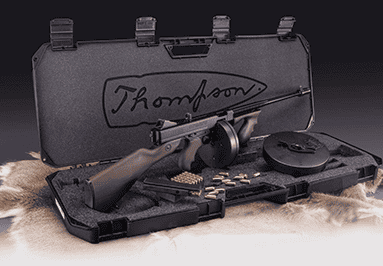Selling Guns That
Sell Themselves
When a product strikes a certain chord and skyrockets in popularity, it sells itself. Why should someone selling that kind of product even think about how to sell it?
Because of this: Whatever is driving the sales surge, there are customers who haven’t turned on to the particular product’s selling points — yet.
In firearms retailing, we’re seeing a classic example of this with the category of subcompact, pocketsize 9mm striker-fired pistols able to hold 11 rounds or more. The trend began (as you don’t need me to tell you) with the introduction a few years ago of the SIG P365 pistol. SIG saw it catch fire and jumped on it, with new variations including a slightly “stretched” model and one with SIG’s very own ROMEO carry optic sight.
GLOCK, Springfield Armory, Smith & Wesson, Taurus, Ruger and most recently Kimber and Mossberg followed. By the time you read this, there will likely be further interpretations of the concept as well.
For a while, these guns were so popular they were hard to come by. Now, from what I’m seeing in my spot checks in gun shops around the country, they’re back in the supply line and in your (and your competitors’!) showcases.
Which means, you have access to enough supply to not just satisfy demand generated outside your gun shop, but to sell to customers who haven’t yet picked up on why this category of handgun is the hottest thing in your pistol showcase right now.
”Do the math. We wouldn’t turn down a 25% increase in salary or lifespan, would we? And one extra shot in an unforgiving second may be something to increase your lifespan!“
More Opportunities To Win A Gun Fight
Why do you — and almost every other gun shop in America — still have a selection of double- action, snub-nosed five- and six-shot revolvers?
For one thing, because a whole lot of people think five or six shots is enough to handle any problem that comes their way. You might want to advise those customers (gently): Things. Have. Changed.
We’re seeing more intruders per case in home invasions and carjackings. More targets require more bullets. We’re seeing crowds trying to drag people out of cars, presumably to beat them, during “peaceful protests” that suddenly become less peaceful. We’re experiencing an epidemic of fentanyl. Now, fentanyl is heroin on steroids; heroin is in essence concentrated morphine; and morphine used to be the strongest painkiller in the pharmacopeia. No surprise when a bad guy on that stuff doesn’t fall down screaming in pain from a bullet or two. We’re seeing a great many offenders wearing body armor, which soaks up bullets before the desperate defender realizes it’s “Plan B” time and he or she has to aim at some other part of the offender.
The traditional carry gun of yesteryear, the snub-nose .38 revolver, carries five or six rounds. Remind your more traditional customers an 11-shot pistol of the type we’re discussing carries the same in-gun firepower as a six-shot Detective Special and a five-shot Chief Special from yesteryear’s paradigm, and they won’t have to take a break in the action (a pause their opponent probably isn’t taking!) to switch guns. They already have this new one you’re trying to sell them in their hand, finger still on trigger, ready to carry on the fight without a break in their defensive action.
Shootability Key
In-gun firepower isn’t the only selling point of the “new paradigm concealed carry pistol.” Another is shootability. These guns all have short-stroke triggers. As far back as the 1970s, iconic defensive firearms instructor John Farnam proved the average person can fire four shots per second (counting from first shot to last) with a double-action revolver, but five shots per second with a short-stroke, short-reset trigger such as those on these little striker-fired 9mms. You can honestly say, “Do the math. We wouldn’t turn down a 25% increase in salary or lifespan, would we? And one extra shot in an unforgiving second may be something to increase your lifespan!”
Someone might counter, “Well, if I can’t do it with five or six shots, I can’t do it at all.” My answer to this would be all the many self-defense shootings over the years that have gone “high volume.” A Google search will turn up armed citizens such as Lance Thomas, the famous Rolex salesman and repairman who went through a series of gun battles with multiple armed robbers, winning them all, but taking up to 17 shots to resolve. (Which reminds us, the fast reloading time of a semi-automatic pistol is another selling point in its favor.) Or the Beverly Hills Jewelers shootout in which the owners and their staff emptied several guns to win a shootout against the Dixie Mafia armed robbers who burst into their store.
You may also hear, “Well, I only need a lot of bullets if I plan to miss a lot.” First, nobody who ever missed in a gunfight planned to. But, more to the point, these pistols are eminently “shootable” — low-bore axis, soft recoil, easy triggers. I’ve shot perfect police qualification scores with pistols in this category, from the original SIG SAUER P365 to the Kimber R7 Mako. They’re simply easy to shoot well.
And, About The Carry Optics Option …
These guns are all now available ready to be fitted with micro red dot sights, and many manufacturers sell them with those sights already on board as a package deal. The red dot sight, virtually everyone in the “combat shooting” world agrees, is the “coming thing.” The red dot allows you to focus on the target instead of the sight index and still make hits. It allows a better view of an opponent’s hands, perhaps keeping you from firing extra shots after he has dropped his own weapon, which you couldn’t see because your conventional sights blocked your view.
Those carry optics have another selling point. We’ve previously discussed in this space the many customers who have difficulty racking a slide to reload a semi-automatic pistol. With the optical sight, you have a vertical “edge” that allows the physical strength-challenged customer to rack the slide with the heel of his or her hand.
Red dot sights come with their own shortcomings, however. They increase the height of the gun to the point where pocket-holster carry will be off the table for most everyone, and ankle carry will be difficult for a lot of folks, too.
The bottom line? The attributes of these pistols are obvious, and it’s why they’re selling so fast.
But there’s no reason not to tell more potential customers why they’re selling so fast, so you can sell even more of them.

